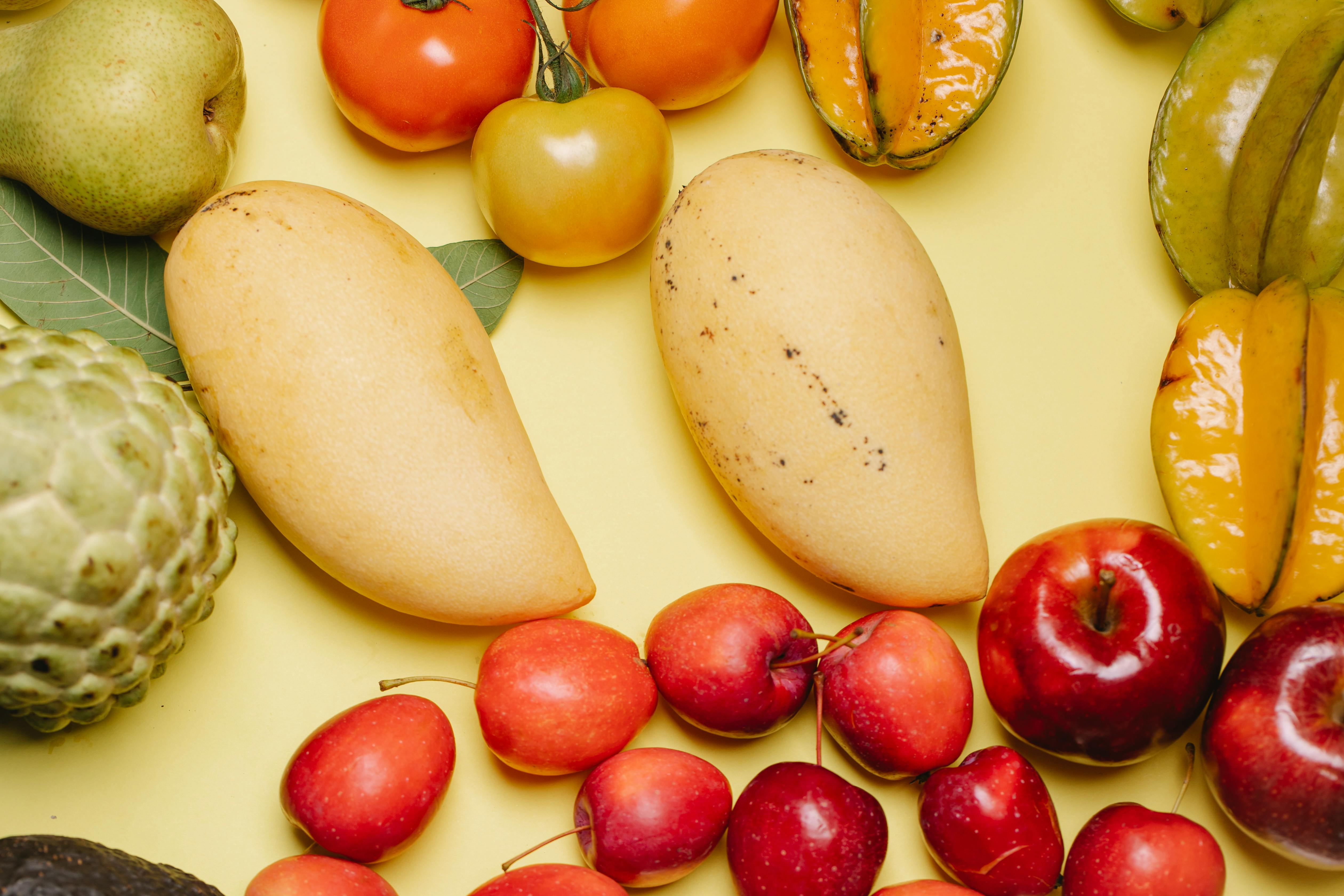Mango fruit leather is a delicious and healthy snack that can be made at home with just a few ingredients. It’s an easy and fun project that can be enjoyed by the whole family. All you need is some ripe mangoes, a dehydrator, and some sugar for sweetness. With these simple ingredients, you will be able to create your own homemade mango fruit leather in just a few hours. In this guide, we will go through the steps of how to make mango fruit leather from start to finish.You will need the following ingredients and supplies to make mango fruit leather:
– Mangoes (4-5 large, or 8-10 small)
– Lemon juice (1 tablespoon)
– Honey (2 tablespoons, optional)
– Blender or food processor
– Baking sheet
– Parchment paper
Gathering Ingredients
When making mango fruit leather, the first step is to gather the necessary ingredients. You will need fresh mangoes, honey or other sweetener of your choice, and a pinch of salt. Depending on your desired flavor, you can also add lemon juice or other spices. Once all the ingredients have been gathered, you can begin preparing the fruit leather.
Preparing The Mango
The most important step in making mango fruit leather is to prepare the mangoes. Start by peeling and cutting the mangoes into small cubes. Then place them in a blender and blend until they become a thick puree. If needed, add a tablespoon or two of water to help create a smoother consistency. Once the mango puree is ready, set it aside while you prepare the other ingredients.
Adding Sweetener and Salt
Once the mango puree is prepared, it’s time to add sweetener and salt. Start by adding honey or another sweetener of your choice to taste. Next, add a pinch of salt and mix until everything is fully incorporated. This will help balance out any sweetness from the honey or other sweetener.
Spread Mango Puree on Baking Sheet
Now it’s time to spread the mango puree onto a baking sheet lined with parchment paper or wax paper. Make sure that the puree is spread out evenly across the baking sheet so that it cooks evenly when placed in an oven preheated to 175 degrees Fahrenheit (80 degrees Celsius). Once everything has been spread out evenly, place it in an oven preheated to 175 degrees Fahrenheit (80 degrees Celsius) for approximately four hours.
Removing Fruit Leather From Baking Sheet
After four hours have passed, remove the fruit leather from the oven and allow it to cool completely before attempting to remove it from its parchment paper lining. Once cooled, use a sharp knife or spatula to carefully remove it from its parchment paper lining before rolling it up into individual pieces or cutting into shapes with cookie cutters.
Storing Fruit Leather
Finally, once you have finished making your fruit leather creations, store them in an airtight container at room temperature for up to two weeks or in an airtight container in a refrigerator for up to one month before consuming them. Enjoy!
Washing the Fruits
Before preparing fruits, it is important to properly wash them. Start by rinsing the fruits under running tap water for a few seconds and then scrubbing the skin with your hands to remove dirt and debris. For firmer fruits such as apples or pears, use a vegetable brush to reach all the crevices. Rinse again after scrubbing to ensure all dirt is gone.
Peeling
Depending on the dish you are preparing, you may need to peel the fruit. A paring knife or a vegetable peeler can be used for this purpose. If you are peeling citrus fruits such as oranges or lemons, make sure you remove only the outermost layer of skin and not too much of the white pith underneath it, as it can make the fruits bitter.
Cutting
Once your fruit is washed and peeled, if necessary, it’s time to cut it into desired shapes and sizes. For some recipes, you may need to cut them into slices or wedges; other recipes may require dicing or chopping into small pieces. Choose appropriate knives for each task – paring knife for slicing soft fruits like kiwi; chef’s knife with its broad blade for cutting hard fruits like apples; serrated knife for slicing tomatoes; etc.
Mashing
Mashing is another way of preparing fruit for cooking or baking purposes. You can mash ripe bananas using a fork until they form a smooth paste-like consistency which can be used in cakes and breads, as an egg substitute in vegan baking recipes, etc. You can also mash cooked apples to make puree which can be added as a sweetener in oatmeal porridge or smoothies.
Blending Fruits
Blending fruits is a great way to create delicious and nutritious smoothies. Blending fruits allows you to get all the vitamins and minerals from the fruit in one easy-to-drink beverage. It’s also a great way to get your daily servings of fruit in an easy and delicious way. Blending fruits can be done with a variety of different tools, such as a blender, food processor, or even an immersion blender. Here are some tips on how to blend fruit for a smoothie:
1. Choose your favorite fruits: Start by selecting your favorite fruits and vegetables for your smoothie. You can use fresh or frozen fruit, depending on what you have available. Some popular choices include strawberries, blueberries, bananas, apples, oranges, pineapples, mangoes, kiwis and more.
2. Add liquid: To make the perfect smoothie consistency you need to add a liquid such as milk, coconut water or juice depending on the type of smoothie you want to make.
3. Add healthy fats: Adding healthy fats such as nut butter or avocado will help provide more nutrients and give the smoothie a creamy texture.
4. Add sweetener (optional): If you prefer your smoothies to be sweeter you can add natural sweeteners such as honey or pure maple syrup.
5. Blend until desired consistency: Once all of the ingredients are added it’s time to blend! Use the highest setting on your blender for about 30-60 seconds until it reaches the desired consistency.
6. Enjoy: Now it’s time to enjoy your delicious and nutritious homemade smoothie!
Spread the Blended Fruits on Trays
Spreading blended fruits on trays is a simple process that can be done quickly and easily. The first step is to prepare the fruit by blending it in a food processor or blender until it is smooth. Once the fruit is blended, it should be poured onto a tray or platter. To create an even layer of blended fruit, use a spatula or spoon to spread it in an even layer across the tray. Make sure that no clumps are left and that the surface is evenly covered with the fruit. When finished spreading, let the blended fruit set for several minutes before serving.
Once set, you can then add any additional toppings you desire such as nuts, coconut flakes, chocolate chips, or other dried fruits. If desired, you can also drizzle some honey or syrup over the top for added sweetness. You can also sprinkle some spices such as cinnamon or nutmeg over the top for added flavor. Once all of your desired toppings are added, your blended fruits on trays are ready to serve!

How to Dry the Mixture
Drying a mixture is an important step in many chemical processes. It is necessary to remove any traces of moisture or water that can interfere with the reaction or process. There are several methods that can be used to dry a mixture, each with its own advantages and disadvantages. The most common methods include air drying, vacuum drying, freeze-drying, and oven-drying.
Air drying is the simplest and most cost-effective method for removing moisture from a mixture. To do this, the mixture is spread out on a porous surface such as a filter paper or cloth and allowed to air dry at room temperature until all the moisture has been removed. This method works best for small batches of mixtures with low moisture content.
Vacuum drying is a more efficient way of removing moisture from mixtures. In this method, the mixture is placed in a vacuum chamber where it is exposed to a low pressure environment which causes the water molecules in the mixture to vaporize more quickly than at atmospheric pressure. This method works well for large batches of mixtures with high moisture content as it ensures that all the water molecules are removed from the mixture quickly and efficiently.
Freeze-drying is another method used to remove moisture from mixtures. In this process, the mixture is frozen at very low temperatures before being placed in a vacuum chamber where it is exposed to sublimation – meaning that the ice crystals turn directly into vapor without first melting into liquid form. This allows for very rapid removal of all water molecules from the mixture without damaging any of its other components.
Finally, oven-drying is also an effective way of removing moisture from mixtures. In this process, heat is applied to drive off any water molecules present in the mixture while leaving behind any other components intact. This method works best for mixtures containing organic compounds as they are not affected by high temperatures as some other substances may be.
Overall, depending on what type of material needs to be dried and how much material needs to be dried, different methods may be used for drying mixtures – air drying, vacuum drying, freeze-drying, or oven-drying – each providing its own advantages and disadvantages depending on the situation at hand.



